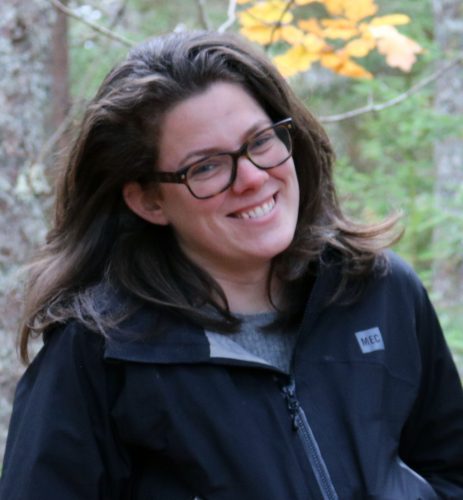Visual arts
The Path We Share: looks at journey of Mi’kmaq and whales
Four First Nations artists explore how contact with others changed the lives of both Mi’kmaq and whales

caption
Alan Syliboy explains the meaning of his acrylic and ink painting at The Path We Share exhibit at the Art Gallery of Nova Scotia.
caption
Alan Syliboy explains the meaning of his acrylic and ink painting at The Path We Share exhibit at the Art Gallery of Nova Scotia.When indigenous peoples were moved onto reserves, the natural rhythm of their lives was interrupted, says Alan Syliboy.
Traditionally Mi’kmaq would move inland in the winter, but would spend their summers on the water.
“We lost contact with the water and so all the memory,” he says.
Syliboy is a Mi’kmaq artist and curator based in Truro. He participated in the cultural Olympiad at the 2010 Olympic Winter Games in Vancouver, B.C.
In a new multimedia exhibit at the Art Gallery of Nova Scotia, The Path We Share, Syliboy and three other First Nations artists — Charles Doucette, Frannie Francis and Courtney M. Leonard examine the parallel journey between Mi’kmaq and whales.
The waterway was important because Mi’kmaq harvested from the ocean, but also travelled on the ocean.
Syliboy says he’s been thinking about the relationship between Mi’kmaq and whales for a while.
“If you look at the predicament that the whales were in, it’s similar to ours,” says Syliboy. “We’re down to a very few per cent and we had a parallel journey in that way.”
He says both Mi’kmaq and whales are declining in numbers while losing their habitats.
The four artists spent two creative residencies collaborating on the project. The group met at the Deanery Project in Lower Ship Harbour in 2014 and Briar Island in 2015.
Syliboy says one of the most powerful pieces in the show is by Frannie Francis. Francis, he says, was hesitant to join the project because of her fear of water.
Four large panels cover a wall in the gallery. Each panel is painted with rows of beads running down the length of the panels. Together, the panels tell Francis’s story of nearly drowning as a child.
“The whales were indirectly part of the healing process because they drew her in to start working through this incident,” says Syliboy.
[idealimageslider id=”9104″]
The four artists recently started a fundraising campaign on Kickstarter to raise money for a short documentary of the same name, The Path We Share. The film follows the artists’ journey exploring the relationship between Mi’kmaq and whales.
The exhibit runs the Art Gallery of Nova Scotia’s until April 24, 2016, before it moves to the gallery’s Yarmouth location.
About the author

Kathleen Napier
Kathleen Napier is currently completing her Master of Journalism (Data and Investigative) at the University of King’s College in Halifax. Special...